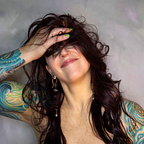Dispatches from SXSW 2023
I was invited to join a panel at this year’s SXSW conference to discuss the intersections of systems thinking, social science, and experience strategy. Attending the conference for the first time in six years, I was quite curious to see what topics would be featured and what common threads might catch my attention. Two particular themes emerged across the the sessions I attended:
Community building has arrived for its big moment.
Across several different tracks, I noticed a wide interest in the power of community building, stretching well beyond its relevance in social organizing, activism, and purpose driven online spaces. For better or for worse, (i.e. for human benefit or profit driven motives), it appears the innovation world has latched onto community for all the right reasons — and some wrong ones too. Perhaps because the pandemic reminded us all how important human connection and community are, or perhaps because consumers are more motivated than ever to engage with brands that align to values that reinforce their own social identity, it appears that community building has become the latest playbook for brand marketing and experience innovation alike.
My take: I love to see it. Community is everything — it’s how we learn, collaborate, and grow. At the same time, I groan at the appropriation of yet another human instinct — collective social identity & interconnected wellbeing — for reductionist marketing strategies to oversimplify and exploit. But, there is so much to be excited about beyond the notion of brand communities. For those who are invested in, or even merely interested in, community building for collective problem solving instead of conspicuous consumption, I encourage you to explore the natural extension of community to that end: collective intelligence. Indeed, if complexity science teaches us anything, it’s that we can’t really build, or even meaningfully manage, the most valuable communities and networks. The most powerful social ecosystems are self-organizing and emergent. They are facilitated, not engineered. For an example of this type of community building, check out NESTA’s Collective Intelligence Design Playbook that addresses community challenges exacerbated by the COVID pandemic, or the Santa Fe Institute’s new open source journal on Collective Intelligence.
Science and art are both creative practices. Who knew?
I know, I know. Somehow this theme featured prominently across several sessions I attended this year, and it appeared to be a genuine eureka moment for many to consider. Listening to speakers explain that scientists and artists apply a (counterintuitively?) similar approach to their work, and that they actually think very similarly (i.e. creatively) about the world, and watching audiences respond with rapt attention, really gave me pause (Is this really 2023? Is SXSW attracting an audience that still buys into super outdated tropes about science and art?) until I realized that it wasn’t really a question of debunking the stereotype of science being dry and boring, but more about the collective process of unlearning socially reinforced assumptions that creativity is a trait only “special” people have. Several panels that included artists and scientists, (sometimes separate humans; sometimes the same individual!) drew explicit parallels between artistic craft and the scientific method, and it seemed a whole conference audience was acknowledging before my eyes that creativity is an activity available to everyone.
My take: This is really less about a “so you’re telling me… scientists are… creative?!” reaction, and more about the concept of creativity more broadly. Creativity and innovation are not a codified process, nor an advanced skill reserved only for a special few. Scientific discovery in particular, even the mundane kind most people experience when they learn an interesting new fact, engages heart and mind in much the same way a breathtaking painting or moving piece of music can. I’d love to see a more populist take on creativity continue to spread. For more on the nature of “creativity,” I recommend checking out Arthur Koestler’s Act of Creation. Koestler defines the “creative act” as an intersection (more than mere association) of two or more seemingly incompatible frames of thought, and he shows us how humor, art, and science all operate on this fundamental idea.
